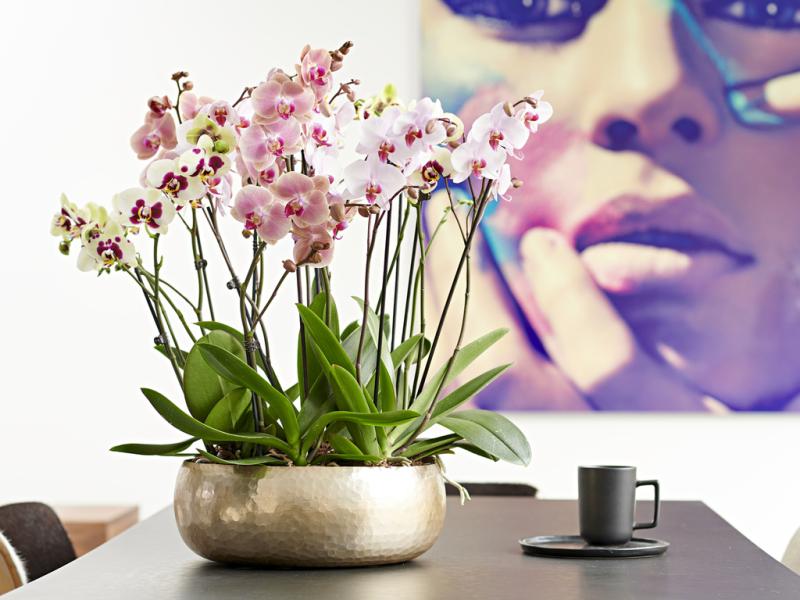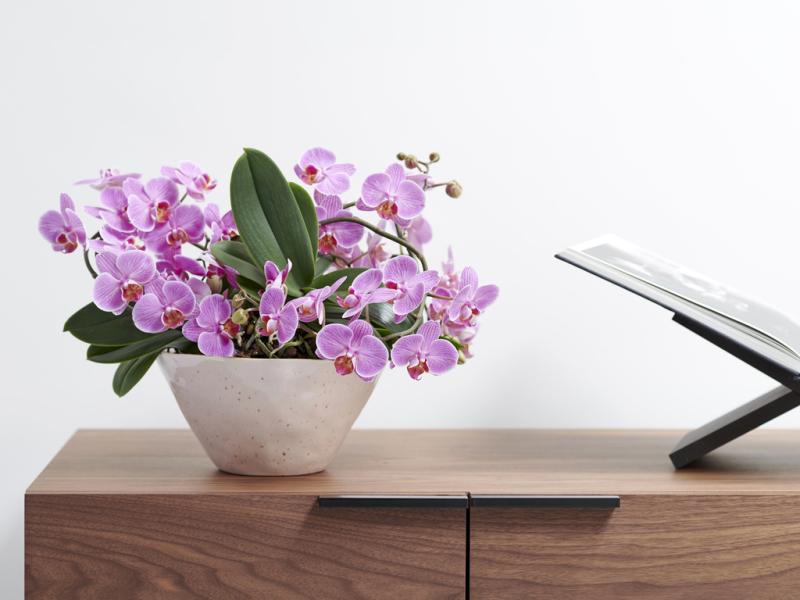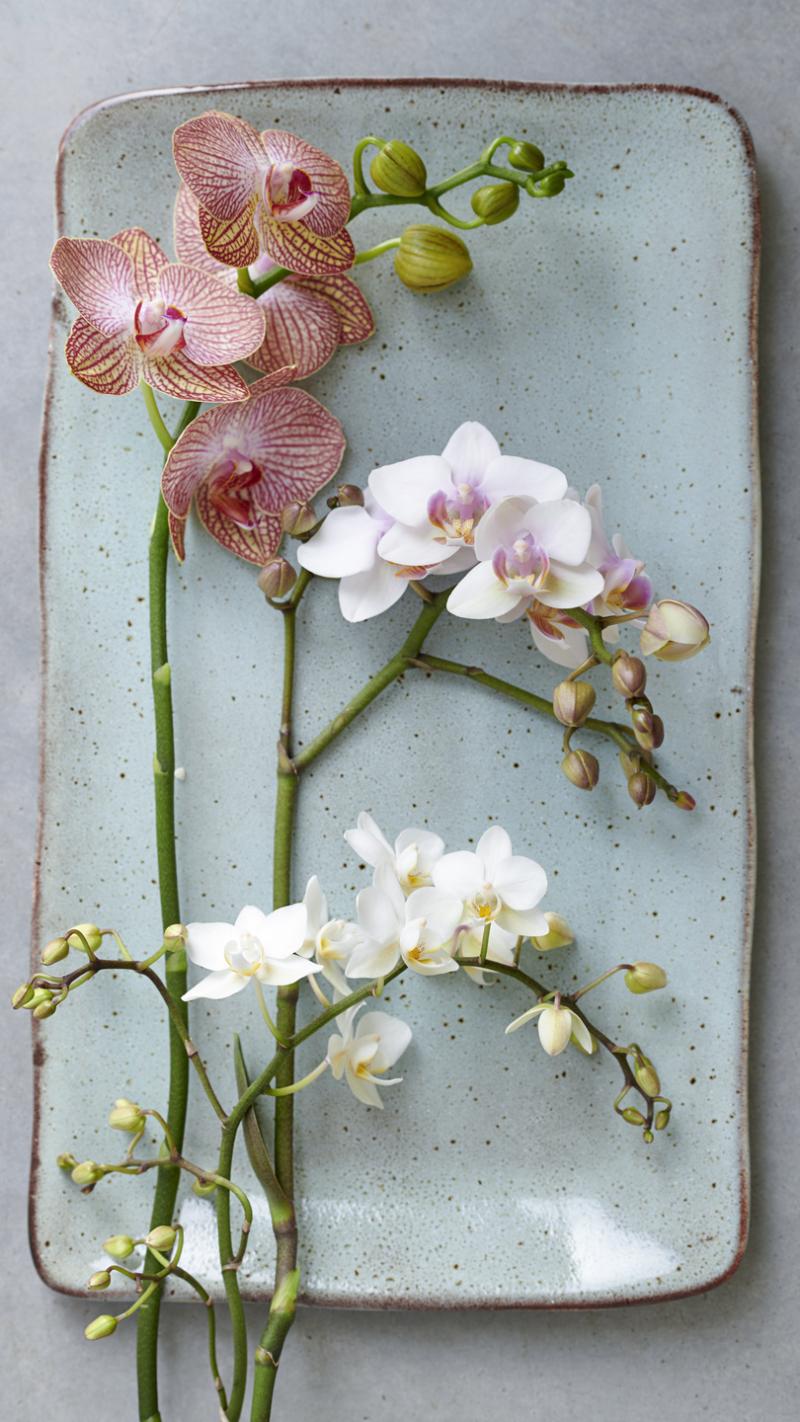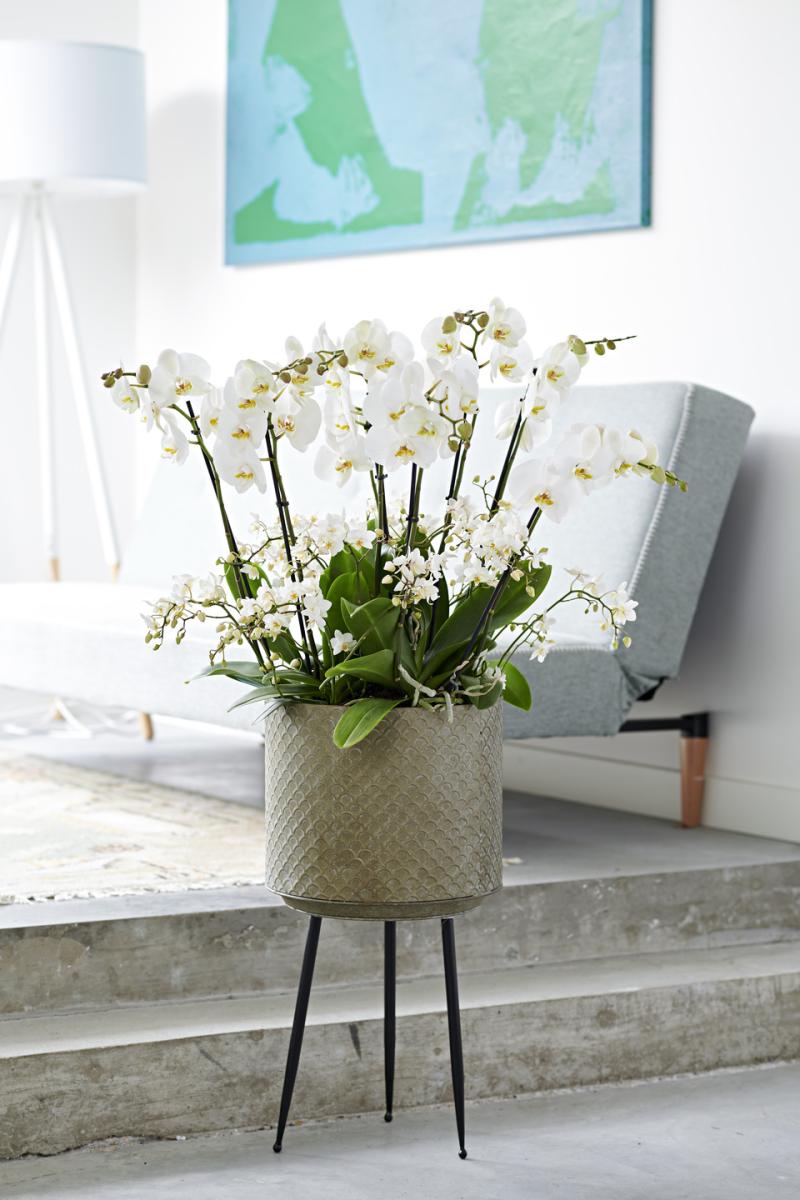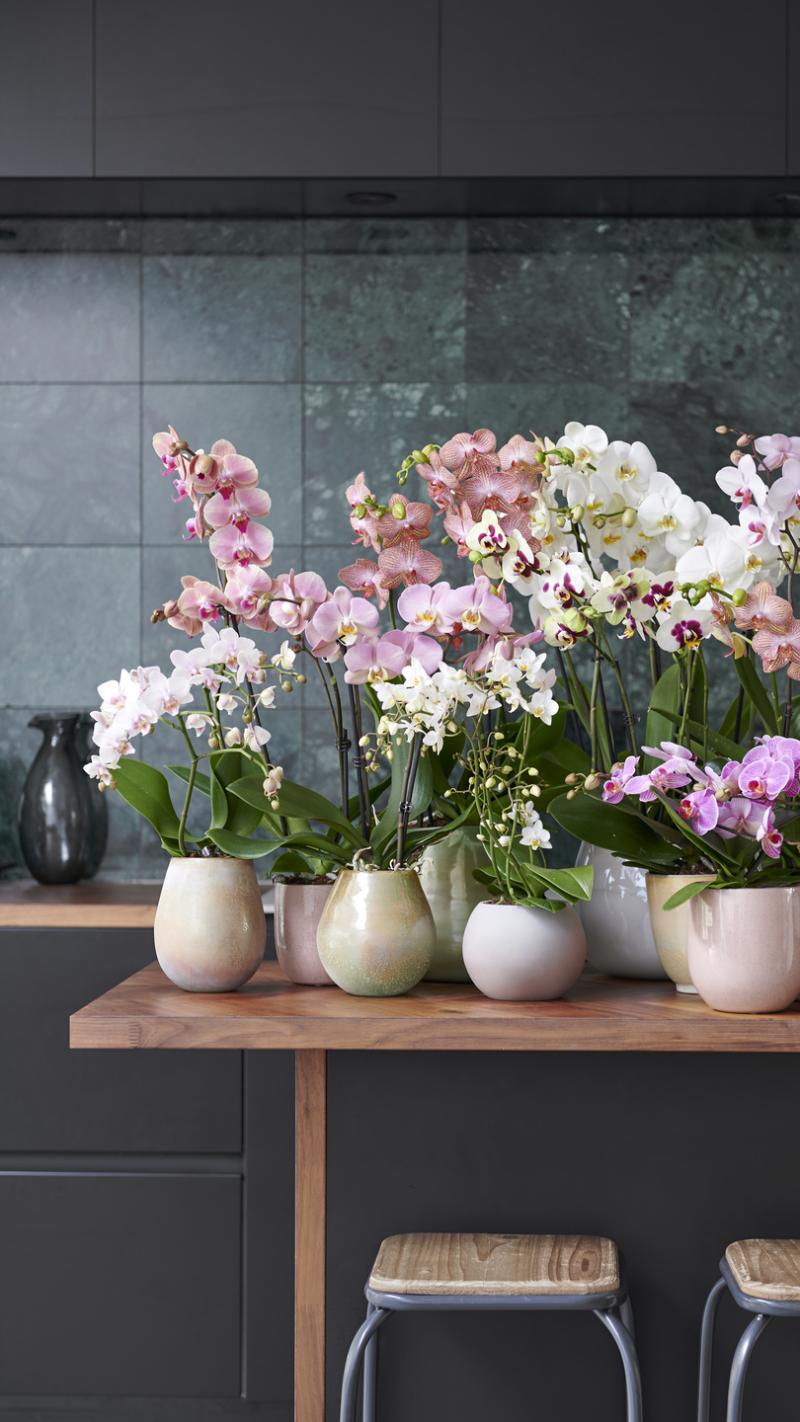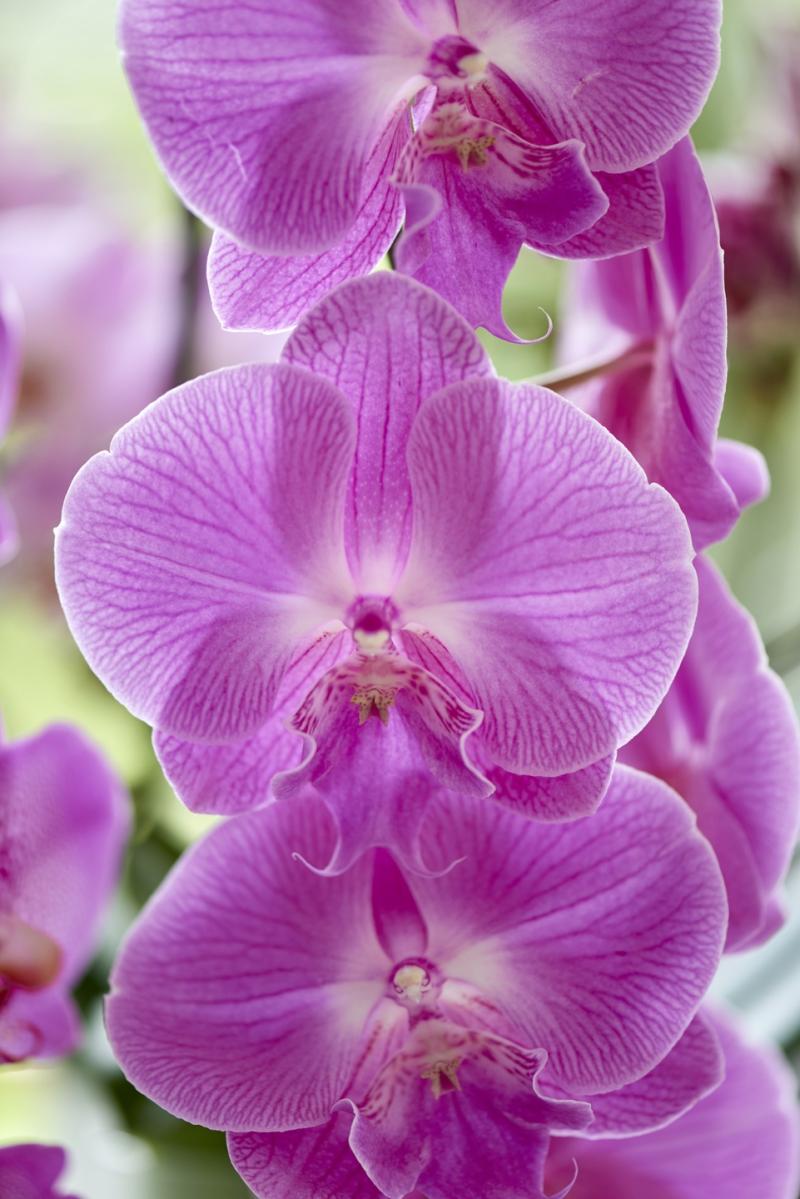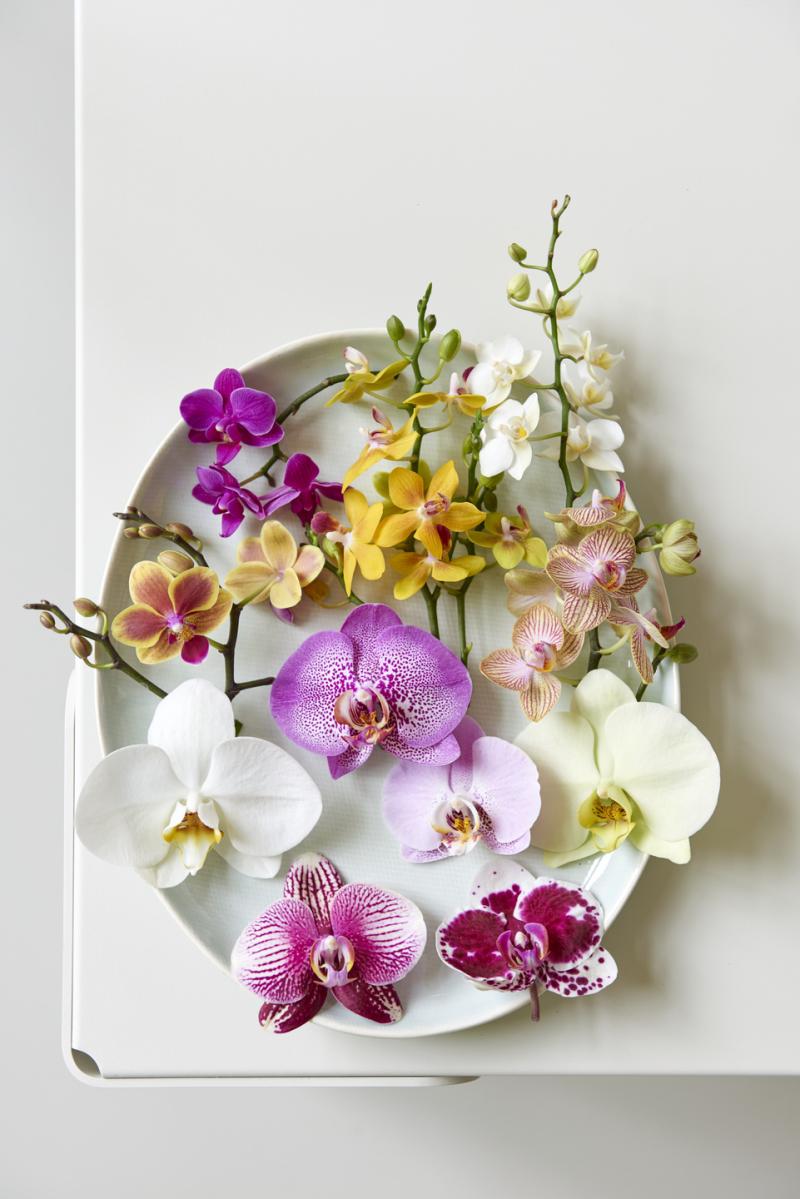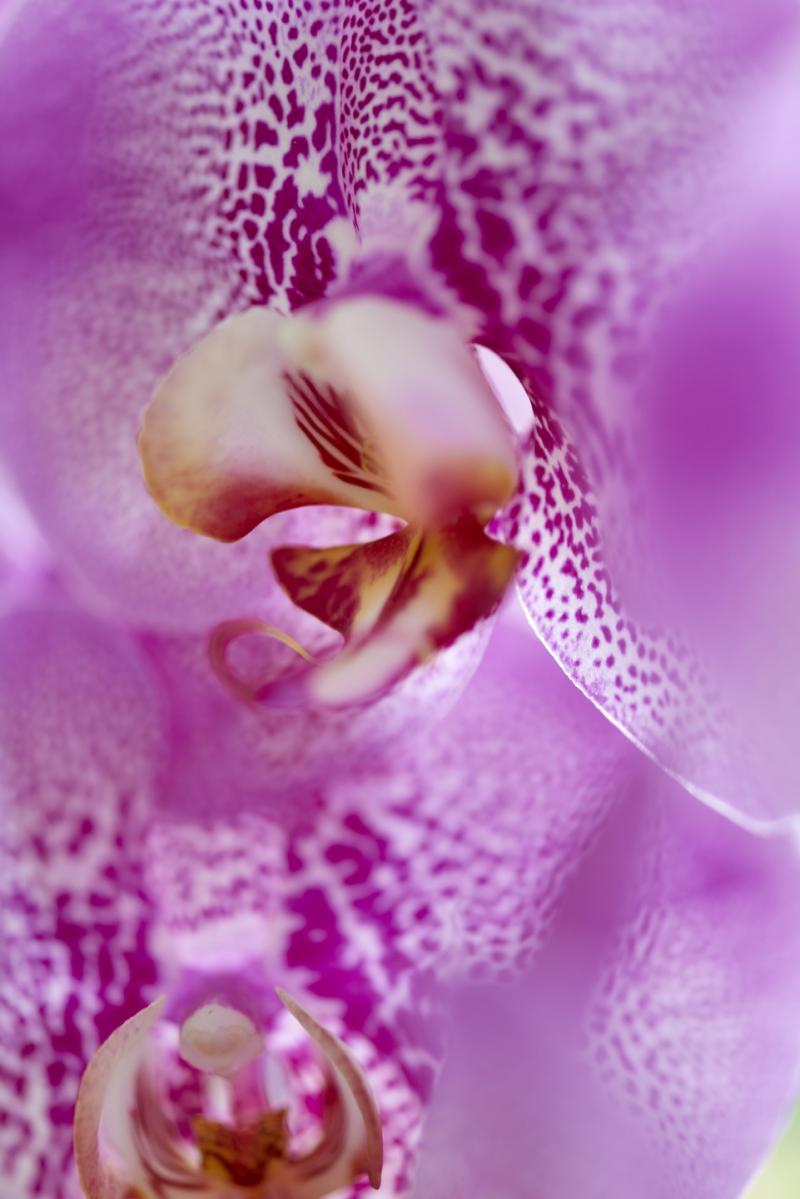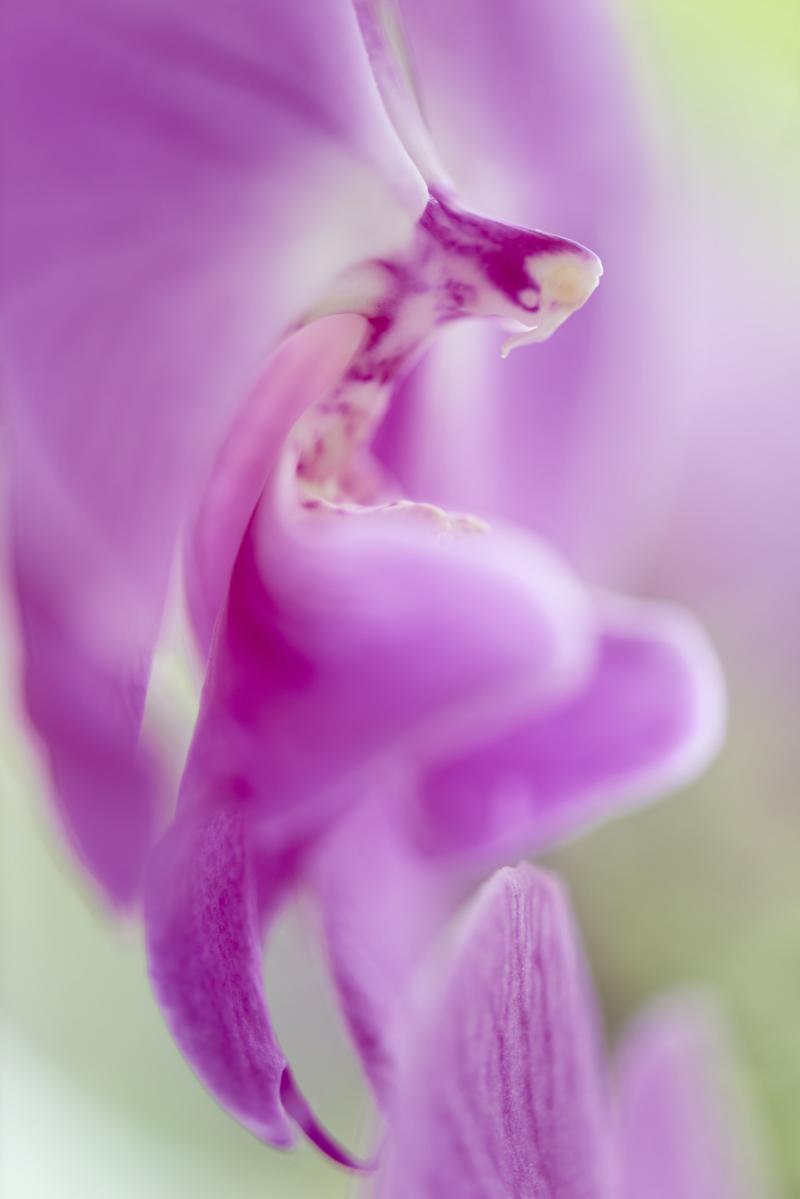September 2018: Phalaenopsis Houseplant of the month
The story of Phalaenopsis
Phalaenopsis is an elegant orchid with flowers that are a bit reminiscent of moths - hence the commonly used name, moth orchid. The plant as a whole is more like a green ballerina. An opulent flower branch grows from an elegant tall stem and starts to bow gracefully as more flowers appear. The flowers can be both large and small, and often have fabulous patterns. Some orchids have a light fragrance, but most are unscented. What they all have in common is an exotic look, flower for a long time, and are easy to maintain.
Origin
In warmer regions, usually in the tropical rainforest, Phalaenopsis often grows as an epiphyte on trees, branches and twigs with its roots in the air. Epiphytes are plants that grow on something without extracting nutrients from it. In terms of care, this means that they need little water and are cultivated on special soil which can often be seen through the clear pot. The aerial roots grow towards the light - a transparent pot keeps them somewhat confined.
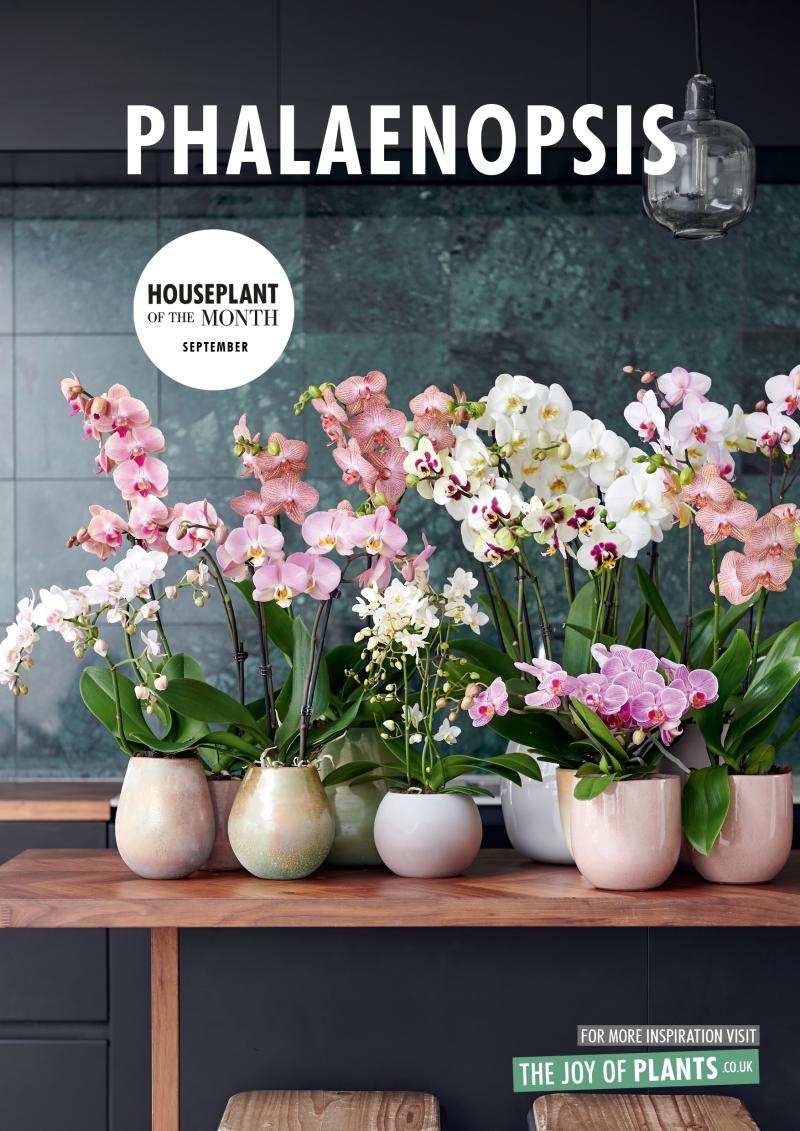
- Check the number of stems per pot, and particularly the condition of the buds: they should not be dried out, and preferably already showing some colour.
- Dropped buds or wilted flowers are a sign that the plant is already past its peak or has been overexposed to ethylene (a gas which causes ageing and comes from sources like ripe fruit).
- Small black spots could indicate botrytis. Damaged leaves are usually the result of incorrect storage or incorrect shipping.
- The plants must be free of pests and diseases such as mealybug and scale insects.
- Also check for cold damage - below 18°C Phalaenopsis must be transported wrapped, including when the customer is taking it home.
Range
Phalaenopsis comes in many varieties, usually as twin-stemmed plants, with various flower and lip colours, both plain and with patterns. New forms are cascade, wave, meandering, hanging, creeping or single (1 flower per plant). Blue orchids are injected with a colouring agent, and new buds will increasingly turn white. The triple-stemmed plant is becoming more widespread, turning Phalaenopsis into a spectacular feature.
Care tips for customers
- Phalaenopsis likes a light position - from mid-October the plant can even tolerate direct sunlight.
- The ideal room temperature is between 18-22°C.
- Phalaenopsis needs little water. Immerse once a week and then allow to drain.
- Add plant food or special orchid food to that immersion once every three weeks to help all the buds open.
Sales and display tips for Phalaenopsis
Phalaenopsis’s attractive roots are worth showing off. Don’t just display the plant in pots, but also in hanging trapezes or glass vases, for example, that should make clear that the moth orchid does not necessarily need soil. Display these attractive houseplants in increasing sizes from small to large, or display a batch on a stepped stage. This will show the flowers off much better. Consider adding some green plants to reinforce the orchids’ jungle feel. To give Phalaenopsis a different look, use a spiral instead of a stick as support and place appealing pots nearby to help customers to select a good matching pot in store straightaway.
Images of Phalaenopsis
You can download and use the images below free of charge if you credit Thejoyofplants.co.uk, or tag:
Facebook: @thejoyofplants
Instagram: @thejoyofplants
Twitter: @thejoyofplants
Phalaenopsis poster
You can download the poster using the link below.

